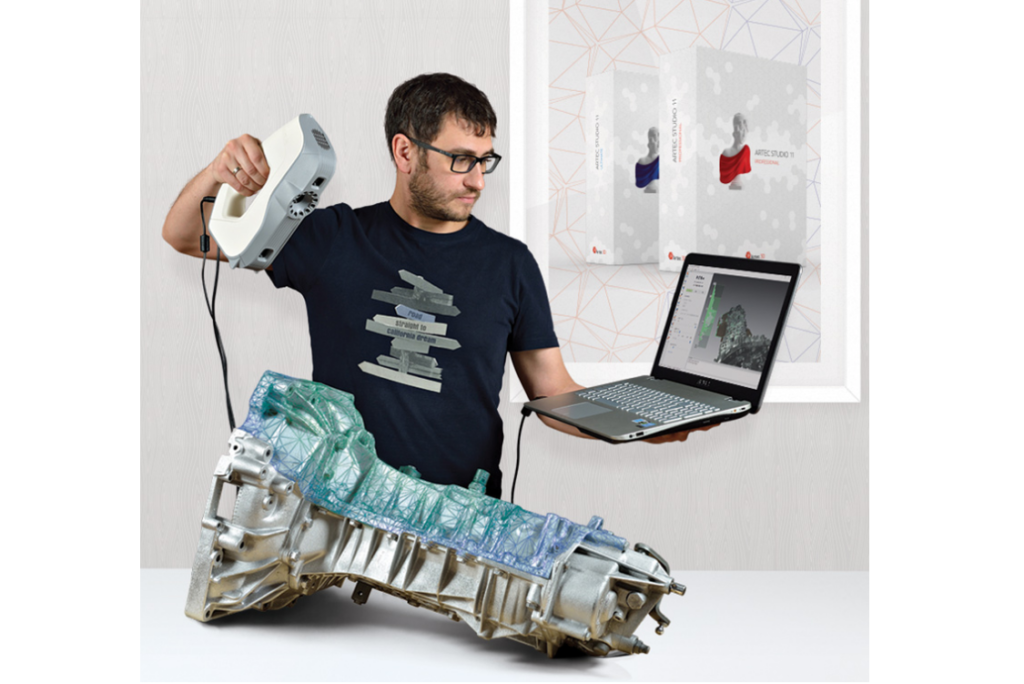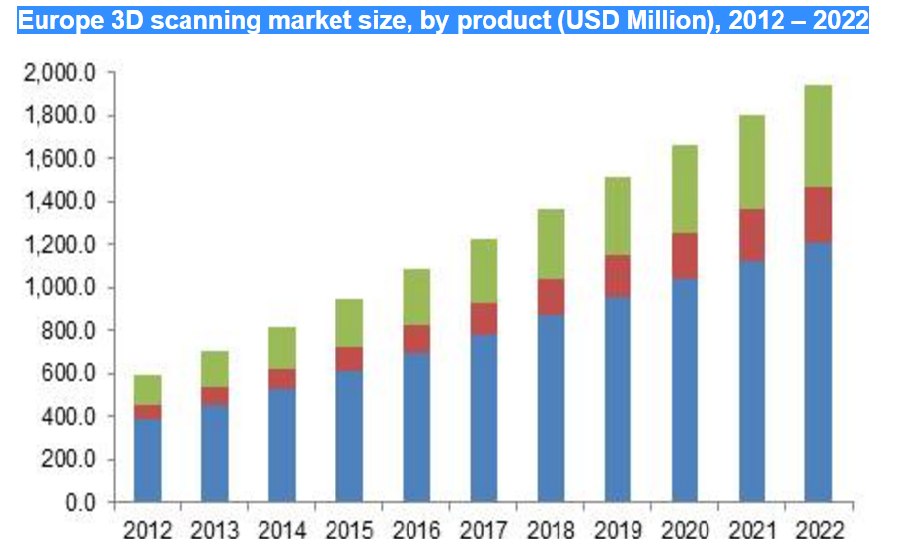 Where are exact figures and projections when you need them? Just the other day I was working on some information regarding the future of technologies related to 3D printing and would have been glad to put my hands on exactly what Global Market Insights has just released. And from their viewpoint, overall, yes, you better put on your stylin’ oversized Ray-Bans—’cause the future is indeed that bright for the 3D scanning industry.
Where are exact figures and projections when you need them? Just the other day I was working on some information regarding the future of technologies related to 3D printing and would have been glad to put my hands on exactly what Global Market Insights has just released. And from their viewpoint, overall, yes, you better put on your stylin’ oversized Ray-Bans—’cause the future is indeed that bright for the 3D scanning industry.
3D printing often gets all the applause, whereas 3D scanning was responsible for starting a project or an innovation to begin with. I sometimes think of 3D scanning as the smart, nerdy kid standing in the background while 3D printing takes all the glory in the spotlight—much like the charming cool kid who takes the credit and blue ribbon for a science fair project that he only did a fraction of the work for. But it sounds as if that scenario will be diminishing greatly in the next few years as the 3D scanning market on its own is projected to rise to $6.05 billion by 2022, according to a recent report.
The technology is expected to be in even greater demand in six years or so due to a variety of factors that will escalate further. Quality control is going to play a factor, and this isn’t a surprise considering how much we’re hearing on the topic as of late. As the pros of 3D technology are flaunted through one innovation after another, many researchers and manufacturers are working on negating all the cons too. The need for rapid prototyping will continue as well, along with reverse engineering. With 3D scanning, those in need of such services are assured both speed, precision, efficiency, and usually a shaving off the bottom line—all attractive features—and all helping to contribute to that $6.05 billion figure.

Artec 3D handheld scanners are very popular from use in musuem artifact preservation to use by archaeologists.
Geographical data from Latin America shows that their contribution to the 3D scanning industry was over $250 million two years ago. Now, they should be growing at a CAGR of 13.9% from 2015 to 2022. And it’s not surprising to see that the Asia Pacific market was responsible for more than 20% of the market alone, with demand still growing. This is most likely due to the obvious acceleration in the use of technology in that region.
As we see fairly regularly, archiving for museums and use of 3D scanning in archaeology is taking on more and more of a role, allowing researchers to preserve original fossils and bones as well as sharing 3D scans, files, and 3D prints with other scientists and anthropologists who would also like to get a gander—as we’ve seen recently in the Homo naledi study, with others allowed to gain access to details via 3D scanning and 3D printing. Other common uses gaining ground for 3D scanning are forensics and educational purposes, such as at the University of Canterbury, where students can now have access to original ancient Roman artifacts, but also spend more intensive learning time holding and studying 3D scanned and printed replicas that are highly detailed. Other areas that will be gaining ground:
- Mechanical dimension inspection
- Defense
- Aerospace
- Transportation
With the opportunity for 3D digitization and the ability to gain such high resolution, conventional techniques should begin to take a back seat, especially like 3D simulation features available in transportation, working to help examine scenarios such as car accidents. Portable scanners of course offer obvious advantages in many cases, as we’ve reported regarding companies producing devices such as the Artec handheld scanners, and new software as well.
The report from GMI also offered other highlights, such as:
- Laser scanners are projected to offer the biggest contribution to the industry. They were valued at over $1.5 billion in 2014 and should continue to lead due to the growing popularity of LED technology, and increased use of high performance CMOS sensors against CCD imagers.
- Entertainment and media allowed for 9% of the global 3D scanning market share in 2014, and with an obvious surge in the area of apps this should continue. Specifically, this includes a demand for video game models in 3D, movies, and other 3D content. The report indicates that industrial manufacturing will grow at a CAGR of 10.9% from 2015 to 2022.
- Already dominating in the 3D industry, in the next years, applications should increase in the following areas: engineering, construction and architecture. 3D scanning will show itself to be integral for processes like structural assessment, as well as construction supervision.
- Short range products will dominate, and medium range 3D scanning products should continue to accelerate from the 30% contribution to revenues in 2014.
GMI lists ‘notable industry participants’ as 3D Digital Corp., Ametek, Basis Software Inc., Maptek, Topcon, and FARO Technologies. There should be a growing emphasis on R&D and new product innovation.
You can also access the full report at Global Market Insights, a company known not only for their comprehensive analysis on future trends, but custom research reports and consulting services too. Their goal is to offer ‘penetrative’ insights that allow other companies to make smart decisions regarding their industries and the future. Discuss further over in the 3D Scanning Industry to 2022 forum over at 3DPB.com.
[Source: Global Market Insights]Subscribe to Our Email Newsletter
Stay up-to-date on all the latest news from the 3D printing industry and receive information and offers from third party vendors.
You May Also Like
UpNano Launches 2PP 3D Printing Service with New NanoPro VT Printer
UpNano, an Austrian company specializing in two-photon polymerization (2PP) additive manufacturing (AM), has launched a service bureau that will offer high-volume output of microscale parts. The new service, NanoPro, will...
Materialise Updates Magics and Partners with BLT at Formnext 2024
At this year’s Formnext, 3D printing software and services pioneer Materialise, unveiled a series of software updates designed to enhance customization capabilities in 3D printing for its users. The announcement...
HP’s New Materials, Tools, and Collaborations to Drive 3D Printing Forward at Formnext 2024
At Formnext 2024, HP unveiled several key developments aimed at advancing additive manufacturing (AM), with new materials, workflow optimization tools, and expanded metal printing capabilities. These announcements reinforce HP’s strategy...
Farsoon at Formnext: What’s New in 3D Printing for 2024
With Formnext 2024 underway in Frankfurt, Farsoon Technologies (SHA: 688433) is showcasing a series of developments unveiled in the lead-up to the event. From advancing food-safe 3D printing for the...





































